The remains of a huge new half-a-billion-year-old extinct animal have been unearthed in the Rocky Mountains.

Scientists uncovered the fossil belonging to the newly discovered species that roamed the seas during the Cambrian period.
Named Titanokorys gainesi, these animals had a distinctive protective head shell and were much bigger than many other species at the time, researchers said.

At an estimated total length of half a meter (1.6 feet), Titanokorys was a giant compared to most animals that lived in the seas at that time—many of which barely reached the size of a pinkie finger.
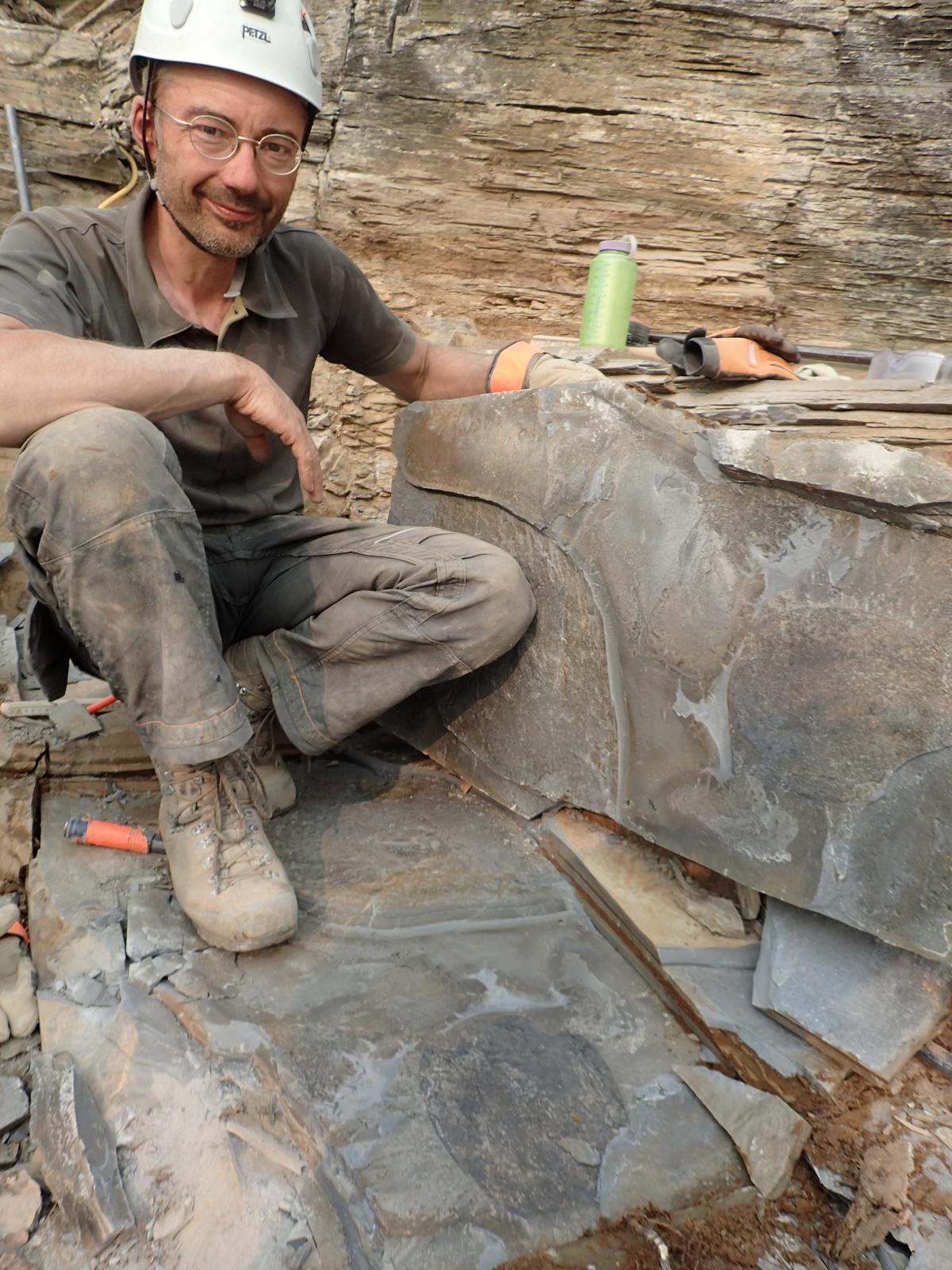
Dr. Jean-Bernard Caron, curator of invertebrate paleontology at the Royal Ontario Museum with a fossil of Titanokorys gainesi at the quarry site located in Kootenay National Park. (SWNS)
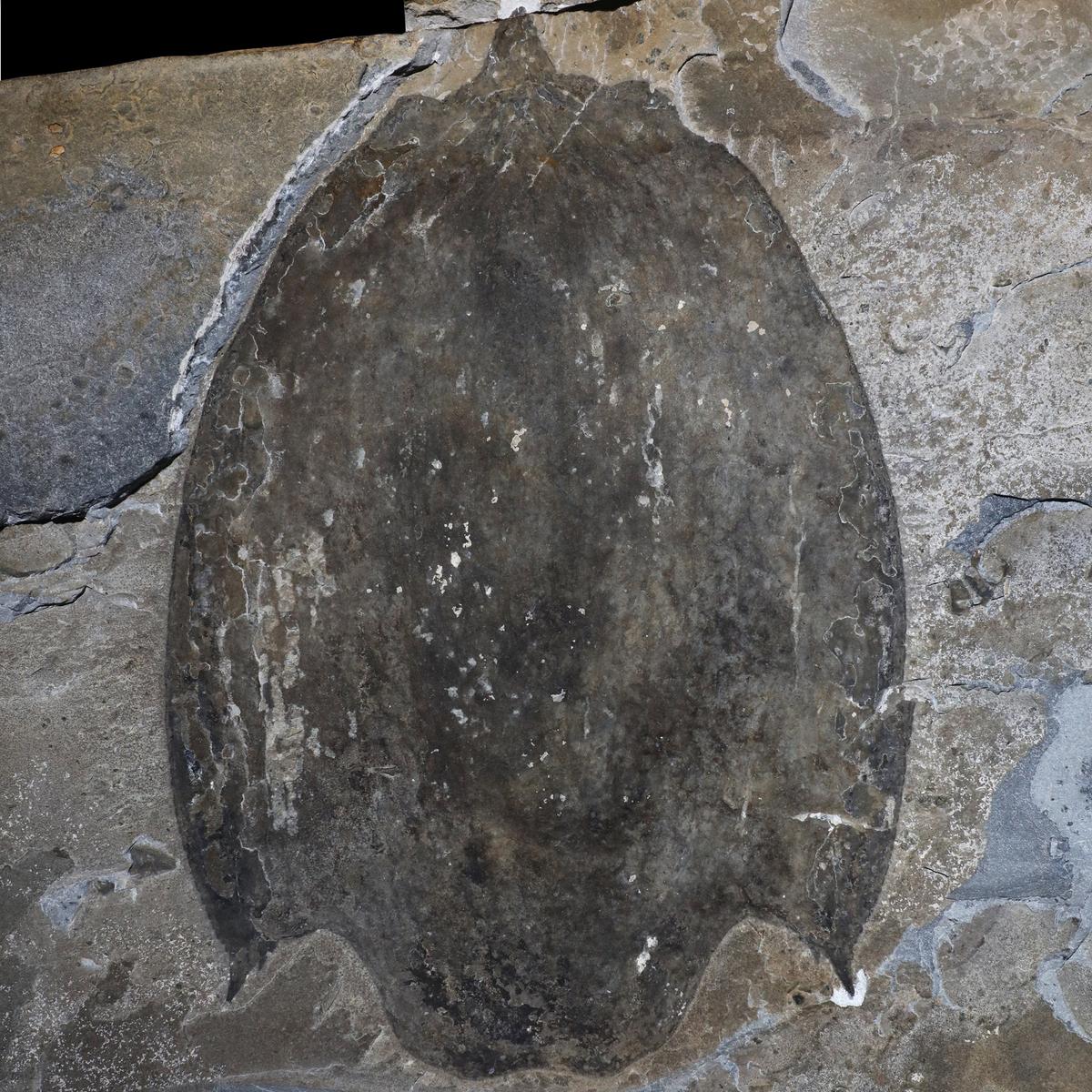 A close-up photo shows a Titanokorys gainesi carapace fossil. (SWNS)
A close-up photo shows a Titanokorys gainesi carapace fossil. (SWNS)
From an evolutionary standpoint, the species belongs to a group of primitive invertebrates—or arthropods—called radiodonts, scientists said.

The most iconic representative of this group is the streamlined predator Anomalocaris, which may itself have approached a meter (3.3 feet) in length.
Like all radiodonts, Titanokorys had multifaceted eyes; a pineapple slice-shaped, tooth-lined mouth; a pair of spiny claws below its head to capture prey; and a body with a series of flaps for swimming, experts said.
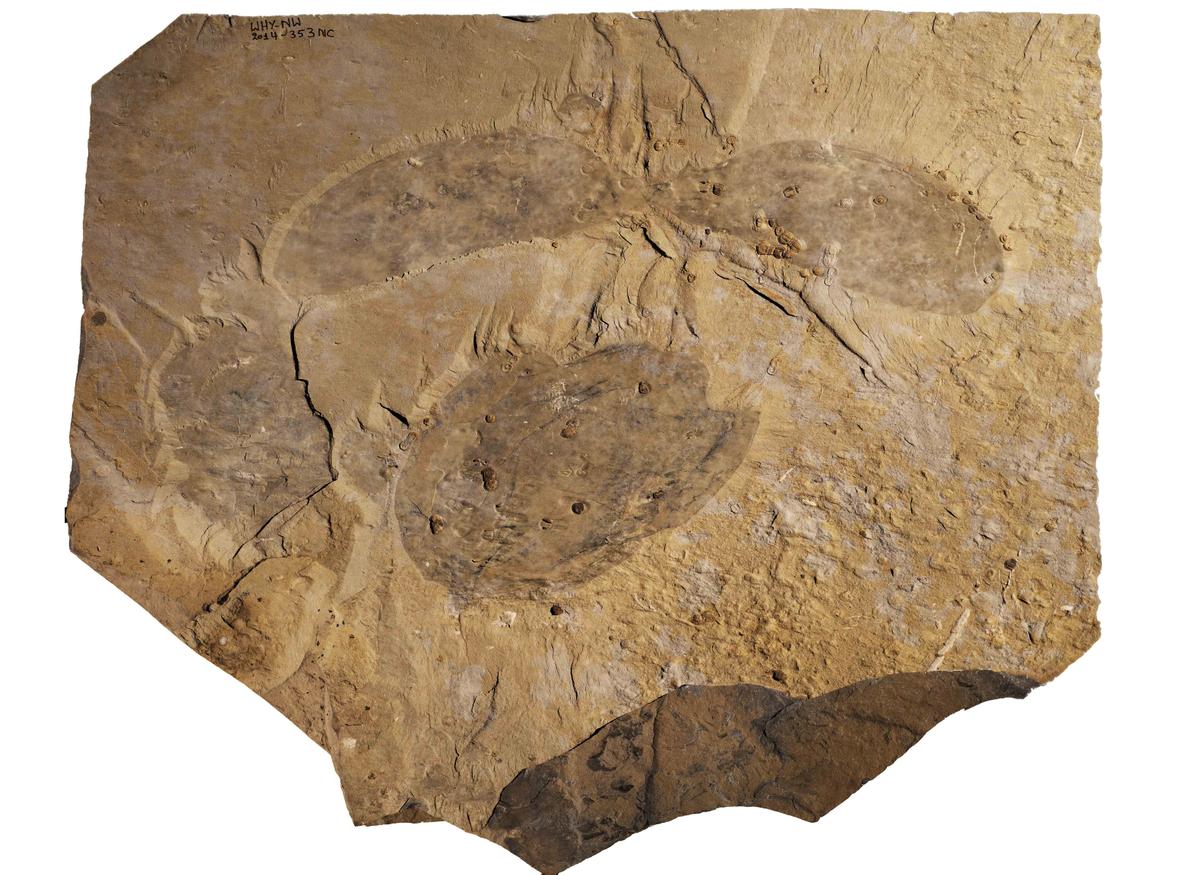
The carapace of Titanokorys gainesi (lower) along with two symmetrical rigid plates (upper) that covered the head from the underside. (SWNS)
Within this group, some species also had large, clearly visible protective shells on their heads, with Titanokorys being one of the largest ever known, a new study found.

“The sheer size of this animal is absolutely mind-boggling, this is one of the biggest animals from the Cambrian period ever found,” said Jean-Bernard Caron, curator of invertebrate paleontology with the Royal Ontario Museum (ROM).
Why some radiodonts evolved such an array of head shell shapes and sizes is still not fully understood and was likely driven by a variety of factors, researchers said.
But the broad, flattened head casing form in Titanokorys suggested this species was adapted to life near the seafloor, they added.
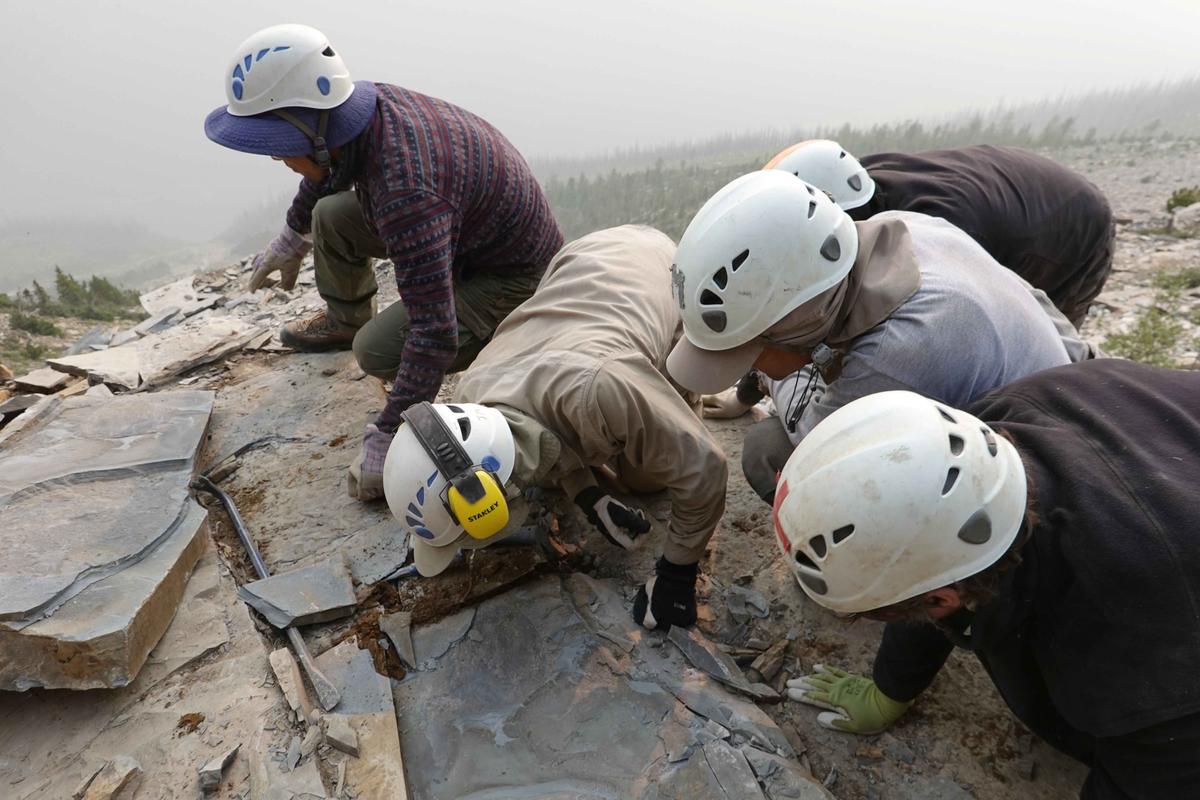
High up in the mountains of Kootenay National Park, a ROM fieldwork crew extracts a shale slab containing a fossil of Titanokorys gainesi. (SWNS)
Joe Moysiuk, co-author of the study and a ROM-based Ph.D. student in ecology and evolutionary biology at the University of Toronto, said: “Titanokorys is part of a subgroup of radiodonts, called hurdiids, characterized by an incredibly long head covered by a three-part carapace that took on myriad shapes.

“The head is so long relative to the body that these animals are really little more than swimming heads.”
All fossils in this study were collected around Marble Canyon in northern Kootenay National Park by successive expeditions by the ROM team.
After it was discovered less than a decade ago, this area has yielded a great variety of animals in the Burgess Shale—a fossil deposit in the area dating back 508 million years to the Cambrian period.
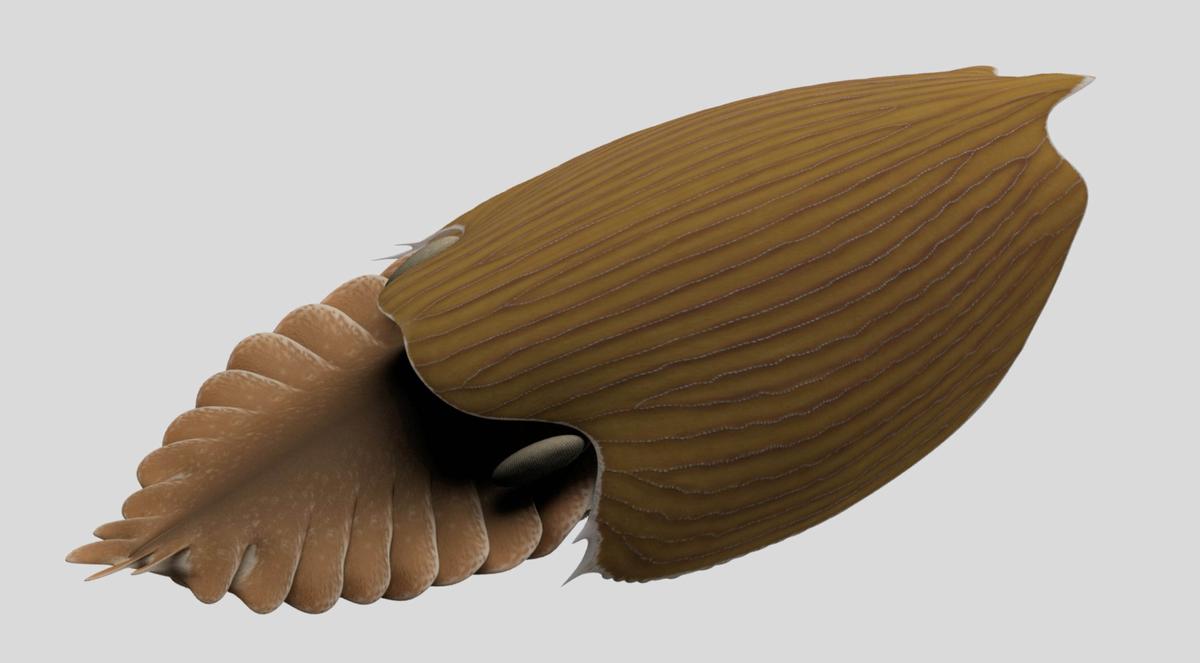
A reconstruction of Titanokorys gainesi. (SWNS)
This discovery includes a smaller, more abundant relative of Titanokorys named Cambroraster falcatus in reference to its Millennium Falcon-shaped head shell.
According to the authors of this latest study, the two species might have competed for similar bottom-dwelling prey.
Dr. Caron, who is also an associate professor in ecology and evolutionary biology and earth sciences at the University of Toronto, and Moysiuk’s Ph.D. advisor, added: “These enigmatic animals certainly had a big impact on Cambrian seafloor ecosystems.
“Their limbs at the front looked like multiple stacked rakes and would have been very efficient at bringing anything they captured in their tiny spines towards the mouth. The huge dorsal carapace might have functioned like a plough.”
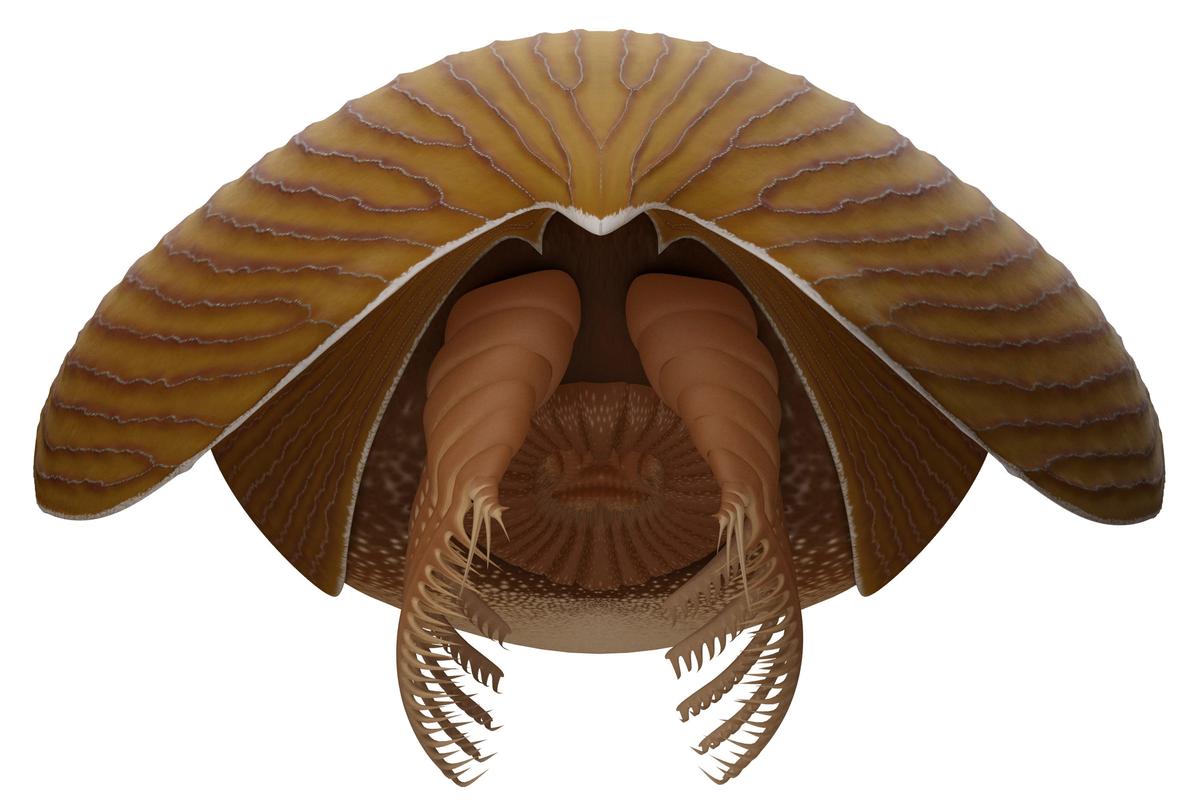
Titanokorys gainesi reconstruction portrayed from the front. (SWNS)
The Burgess Shale fossil sites are located within Yoho and Kootenay National Parks and are managed by Parks Canada.
Parks Canada holds award-winning guided hikes showcasing the work of leading scientific researchers to expand knowledge and understanding of this key period of Earth’s history.
The Burgess Shale was designated a UNESCO World Heritage Site in 1980 due to its outstanding universal value and is now part of the larger Canadian Rocky Mountain Parks World Heritage Site.
The discovery of Titanokorys gainesi was profiled in the CBC’s “The Nature of Things” episode “First Animals.”
These and other Burgess Shale specimens will be showcased in a new gallery at ROM, the Willner Madge Gallery, Dawn of Life, which opens in December.



